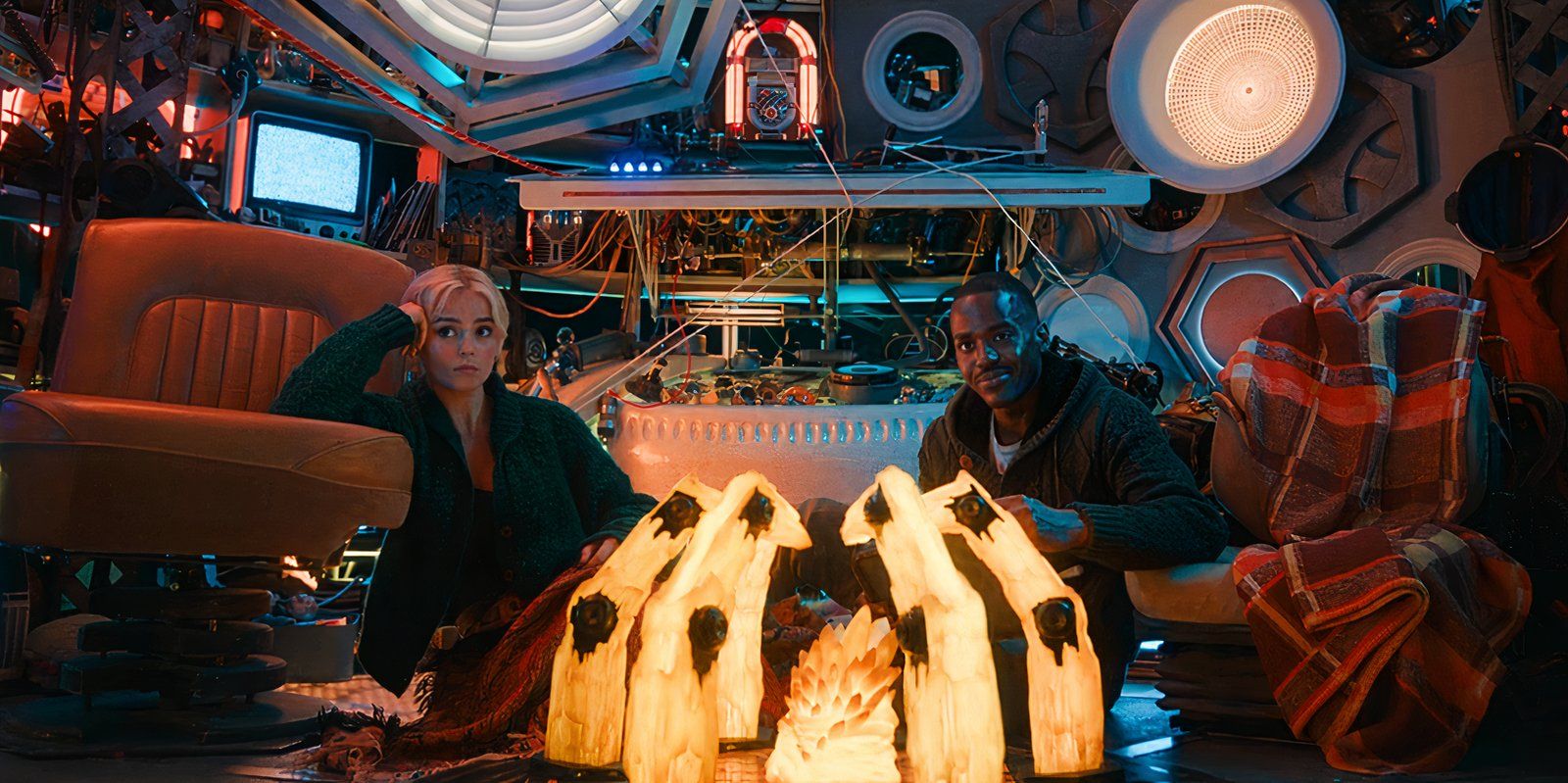Warning: This article contains MAJOR SPOILERS for the Doctor Who season 14 finale.
Summary
- To understand Doctor Who season 14’s finale, watching Tales of the TARDIS is crucial for context on the Memory TARDIS.
- Tales of the TARDIS provides explanations on the purpose and abilities of the Memory TARDIS, which the Fifteenth Doctor only briefly touches upon.
- The Memory TARDIS has a significant narrative impact in Doctor Who season 14’s finale, amplifying its role beyond the spinoff.
Doctor Who’s season 14 finale introduces a concept that will make no sense to viewers who haven’t watched Doctor Who’s newest spinoff show. The last episode of Doctor Who season 14 has finally released, wrapping up a thrilling debut season for Ncuti Gatwa’s Fifteenth Doctor. Like past finales, the ending of Doctor Who season 14 solves mysteries like the identity of Ruby’s mother while continuing to build the lore of the Whoniverse.
Sutekh’s survival is explained by the fact that he latched onto the TARDIS and grew his powers over time, going from a man-sized deity to a gigantic, all-powerful titan. Moreover, the member of the Doctor Who Pantheon has control over the TARDIS, stranding the Doctor, Ruby Sunday, and Mel. To give them a way to fight back, the show introduces a machine called the Memory TARDIS. Rather than being a random introduction like bi-generation, the time and space machine actually comes from a Doctor Who spinoff.
Related
Doctor Who Proves 1 Forgotten RTD Character Secretly Set Up Season 14’s Main Villain
An RTD-era villain last seen facing David Tennant 15 years ago set up Doctor Who’s Pantheon and the return of Sutekh for the season 14 finale.
You Need To Watch Tales Of The TARDIS To Understand Doctor Who Season 14’s Finale
Tales Of The TARDIS Explains How The Memory TARDIS Works And Its Purpose
Up until the finale of Doctor Who season 14, the Memory TARDIS has only appeared in the spinoff show Tales of the TARDIS. The show introduced the new, metaphysical version of the time and space machine that lives solely on memory. Tales of the TARDIS provides context as to what the Memory TARDIS is, how it works, and its overall purpose.
Tales of the TARDIS is only available on the BBC iPlayer, but the introduction and closing clips of each episode are available on the
Doctor Who
YouTube channel
.
The most basic description of the Memory TARDIS is that it brings companions and Doctors together so they can reflect on their adventures. However, the explanation of this machine grows over each Tales of the TARDIS episode, with the different companions and doctors speculating about how and why it exists. Each addition creates a better understanding of this new form of the TARDIS.
Without this crucial information, the Memory TARDIS seems random and confusing at the end of Doctor Who season 14. While the machine’s creation is explained, the Fifteenth Doctor only provides the most maddeningly vague description. They say the Memory TARDIS has “bits and pieces of every TARDIS that ever was. Held together by hopes and wishes and luck.” As such, viewers with access to Tales of the TARDIS should watch the series to get a better understanding of the Memory TARDIS.
Doctor Who Season 14’s Finale Makes The Memory TARDIS Way More Important
The Doctor Who Episode Expands Upon The Purpose And Abilities Of The Memory TARDIS
The Memory TARDIS has a degree of sentience, like the original TARDIS, which allows it to reveal Sutekh’s motivations through the screen using a memory.
While Tales of the TARDIS gives the Memory TARDIS an important purpose related to character arcs, Doctor Who’s Season 14 finale makes the device much more narratively crucial. Fifteen, Ruby, and Mel are able to harness such strong memories with the Time Window that they create a version of the Memory TARDIS that is physical instead of psychic. They use this version of the TARDIS in their battle against Sutekh.
Additionally, the Memory TARDIS has a degree of sentience, like the original TARDIS, which allows it to reveal Sutekh’s motivations through the screen using a memory. It also tells the Doctor how to find the identity of Ruby Sunday’s mother using the Doctor’s memory of 2046. This proves that the memories in the Memory TARDIS are much more powerful than they initially seemed in Tales of the TARDIS.


